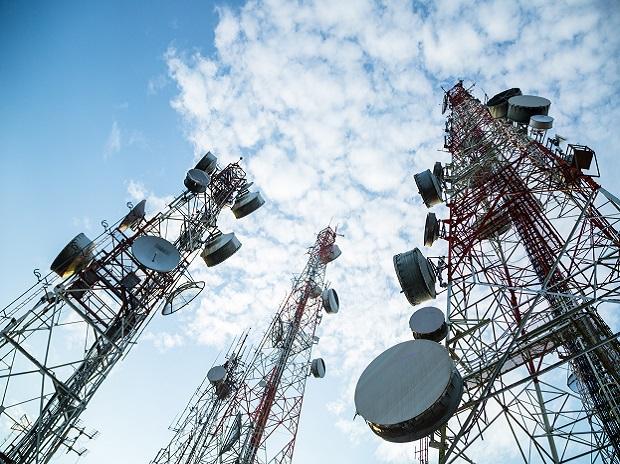Why Airtel’s tariff hike is significant, and what it means for the sector 2022

According to a senior executive at the company, Airtel chose to raise prices in these areas first to gauge user reaction and, more importantly, the reaction of its rivals. We go over the specifics.
Bharti Airtel has increased its entry-level tariff by as much as 57% in two circles—Haryana and Odisha—in an effort to boost the amount of user revenue it receives. The telco’s action may encourage other providers, particularly cash-strapped Vodafone Idea, to implement comparable tariff increases.
Airtel has chosen to discontinue its cheapest Rs 99 plan in the Haryana and Odisha circles, which included talk time and 200 MB of 2G mobile data over a 28-day period. The cheapest plan in these new circles now starts at Rs 155 and includes unlimited voice calling, 1 GB of mobile data, and 300 SMSes for 24 days. This is due to the plan’s withdrawal.

Why is Airtel’s action important?
According to a senior executive at the company, Airtel chose to raise prices in these areas first to gauge user reaction and, more importantly, the reaction of its rivals. “It would be great for the current industry as a whole if we saw the other players take hikes.
We may consider raising plan prices nationwide if the competitors raise their prices in these areas as well, an executive said. In the first quarter of FY2023, the combined contributions from the Haryana and Odisha circles totaled 4.4% of Airtel’s Adjusted Gross Revenues (AGR).
For a very long time, Bharti Airtel has advocated that for the industry to be sustainable, the average revenue per user (ARPU) should initially be around Rs 200 per month and eventually increase to Rs 300. Airtel’s ARPU increased by 3.8% quarter over quarter during the July to September period, reaching Rs 190, surpassing Jio’s Rs 177.2 and Vodafone Idea’s Rs 131.
Reliance Jio’s comparable 28-day plan has also unlimited voice calls for Rs91, while Vodafone India’s comparable Rs 99 plan is available to its subscribers.
According to experts in the field, Vodafone Idea (Vi), which currently has the lowest ARPU among the three telcos, will benefit from Airtel’s move. “The industry continues to have the lowest tariffs in the entire world.
Jio and Vi may implement a similar tariff increase in the coming weeks or months if any operator decides to raise the base rate, according to Prashant Singhal, leader of EY’s global TMT emerging markets practice.
The three telcos last increased their rates by about 25% in November 2021. Since then, they have purchased a spectrum totaling Rs. 1.49 lakh crore in the 5G spectrum auction that took place earlier this year.

In a research note, ICICI Securities stated that if the competition follows, it will lead to a faster deleveraging of balance sheets and an increase in the production of free cash flow, both of which are crucial for telcos given the significant amount of money they are currently spending to roll out 5G networks.
How might Airtel’s action affect the business?
In addition to enabling other telcos to raise rates, Airtel’s increase is not anticipated to mainly have an impact on its 4G customers because the plan it canceled only provided 2G internet speeds. According to ICICI Securities, “Airtel has ensured that its peers cannot take advantage of the current situation to poach its 4G customers by limiting the effective tariff hike to only 2G customers.”
According to Citigroup, Bharti Airtel’s mobile revenue could increase by between 2.5 and 3% if it is successful in implementing this change across all of its service areas.
Bharti Airtel Ltd.’s pilot program to increase baseline rates for prepaid customers in two main circles of Haryana and Odisha from 99 to 155 will not only be a test for the No. 2 telco but also for the industry as a mere whole, according to industry observers, as its success could mean much higher levels of rate increase than seen in previous years.
The bottom of their user base could be moved up to the 155 plan from the 99 plan, and the top end of prepaid tariffs could be raised by another 10–20%, as is anticipated along the lines of the most recent tariff increase in November 2021.
According to analysts, encouraging entry-level customers to purchase a higher value pack will result in an immediate 57% increase in tariffs, which will boost Airtel’s mobile revenue by about 2.5–3%.
The average revenue per user (Arpu), a crucial indicator of telco profitability, would rise even further if customers on the other end of the prepaid segment were asked to pay more for the current plans.
According to Prashant Singhal, global TMT emerging markets leader at EY, “Raising the baseline level of tariffs and increasing headline tariffs, as is expected, together will lead to a big upside for telcos’ Ebitda levels which would in turn benefit the financial health of the entire industry.”

Analysts at Citi Research noted that another round of tariff hikes, if successfully implemented, could be a key positive catalyst and driver of investor sentiment amid an anticipated increase in 5G CAPEX. They added that all other things being equal, a 5% increase in mobile ARPU can result in approximately a 4% upside to the estimated FY24 Ebitda.
“Vodafone Idea, which has been attempting to raise money for some time, may benefit from this as well. Rising Arpu may be viewed by investors as a sign that the company’s financial situation is improving, a sector expert said on the condition of anonymity.
After the previous round of tariff increases in 2021, prepaid recharge pack sellers Airtel and Vodafone Idea have requested another round.
They have reiterated the necessity of average revenue per user (Arpus) becoming sustainable in order to enhance the sector’s financial health. India has some of the lowest telecom rates in the world, and according to Airtel and Vodafone Idea, Arpus needs to increase to 200 and then gradually to 300 over the next few years.
Analysts predicted that consumer acceptance of the new plan, which offers unlimited data and calling as opposed to the metered calls, messages, and data usage in the 99 plan, will be crucial to this industry shift. If struggling carrier Vodafone Idea follows suit with changes to its tariff base on similarly priced plans, this could prove to be a huge benefit for the company.
The 99 recharge pack is reportedly used by close to 100 million consumers, according to market estimates. Airtel and Vodafone Idea are currently offering the package in all circles.
The pack in two circles is no longer available from Airtel. If Bharti’s calculated risk is successful, it will increase the risk of increased competition and new market entrants. This should also significantly boost VIL’s prospects, according to analysts at ICICI Securities. However, analysts at Morgan Stanley pointed out that reducing customer churn, or stopping the loss of customers, is a key challenge because it increased to 4.3% in the September quarter from 3.5% the previous quarter.
Edited by Prakriti Arora




